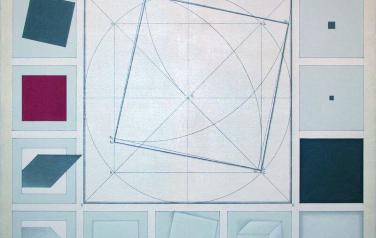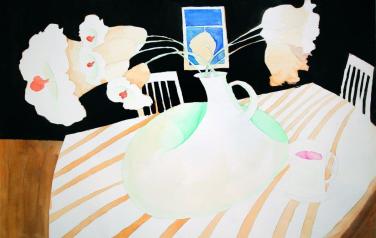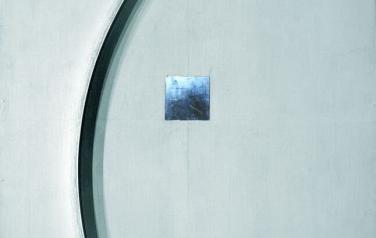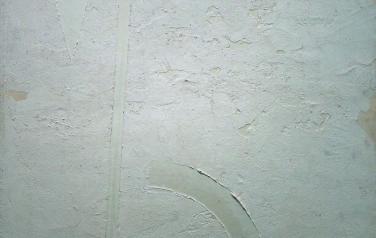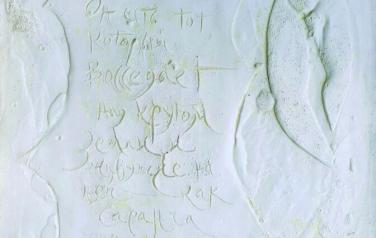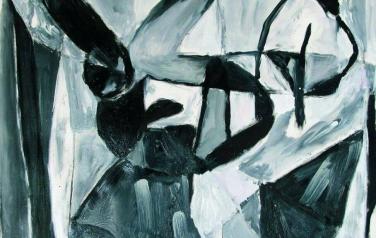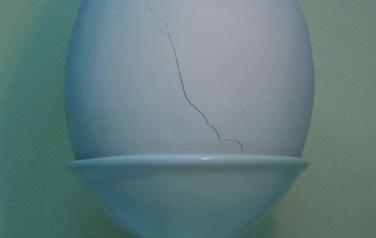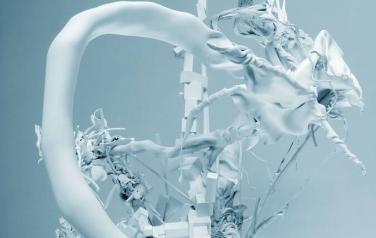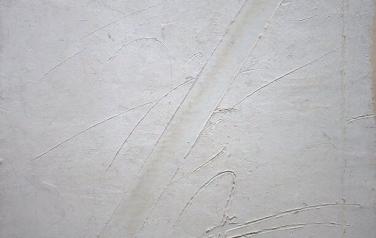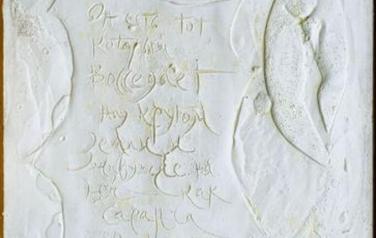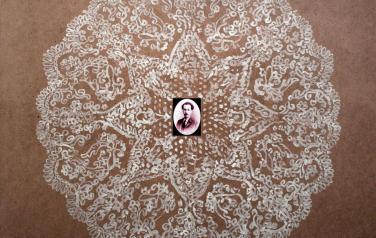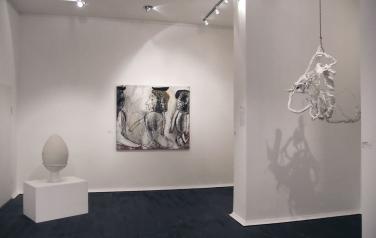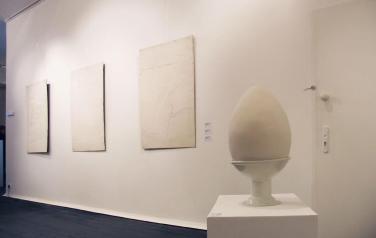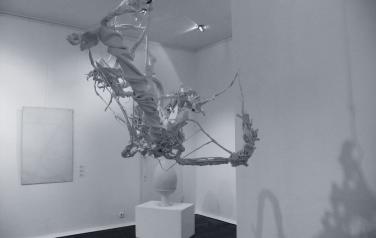Artists:
- Vika Begalskaya
- Evgeny Gorokhovsky
- Dmitri Kawarga
- Marina Kastalskaya
- Tatyana and Sergey Kostrikov
- Mikhail Kulakov
- Oleg Lang
- Rostislav Lebedev
- Aleksandr Pankin
- Viktor Sedov.
“Spread out army of expanses:
Spaces are hidden in spaces”.
Andrey Beliy
The idea of the colour white, like the idea of silence, – is something which does not exist, and yet, at the same time, is always present as “noise” of the visual or acoustic. Noise which is impossible to single out, and to get close to it means one has to believe that it exists. The splitting of white into the colour spectrum makes it one of the symbols of the primordial. In each work, it becomes the starting point for such foundations of our self-identity as the physical world, spiritual experience, psychic processes, intellectual cognition, exchanges of energy, etc.
Marina Kastalskaya’s abstract works open this exhibition. The minimalist and ascetic embodiments of her ideas are poised between sculpture and painting. Her interpretation of “white” defies the disunity of the canvas and drawing. The three compositions on show are white Suprematist works, made in the layer of the paper pulp as traces of eternity and emptiness that are inherent in everything and in the synthetic image, created by man.
Aleksandr Pankin also studies visual mechanics. If in one work he examines namely the possibility of the existence of “white space”, then in another he already inverts the connections between this space and reality. The truth of unity, which is being sought, is in the disappearance of the border of the interconnection between the artificial and natural worlds.
With the help of his object-reminder about absent form, the sculptor, Dmitri Kawarga, confronts us with the illusory and incorporeal nature of “white”. The artist’s works are the absolute of polymorphism and a mechanism for creating thoughts.
Given a title for the first time in this exhibition, Victor Sedov’s “white areas” have become winter landscapes. Being naive, but refined, on the verge of objectless works, they are inspired. Snowy expanses, as a symbol of peace, that has settled, and of silence, not lifeless, but full of expectation and anticipation of rebirth.
In the paintings of Oleg Lang and Vika Begalskaya a person appears and the “white” immediately attains a psychological dimension. Walking to the left and right in two-dimensional space, Lang’s characters look spellbound at the viewer, as if into an abyss. They are torn apart by a blizzard, mixed with absent space by the chaos of brushstrokes. And in Begalskaya’s work the outlines of a girl, depicted as feverish patches, separate the empty “white” inside from the emptiness outside.
The watercolour lightness of Evgeny Gorokhovsky’s drawing has as if accidentally appeared before us for a brief moment and will now slip into the beckoning depth of the dark background. Here we perceive “white” in contrast and reveal the omnipresence of white light in the hues of any colour.
Finally, Rostislav Lebedev’s work, as a conclusion to the general dialogue, treats the pathos of the relevance of the theme with irony and refers us to the art of Andrey Beliy. However, the legacy of this poet-symbolist reminds us of the crisis of contemporary culture, of the fragmented nature of the perception of human experience.
And what this exhibition presents – is the attempt to find the fullness of being: to bring knowledge and creativity, philosophy and aesthetics, religion and science to the state of primordial wholeness.
Maria Basyrova

